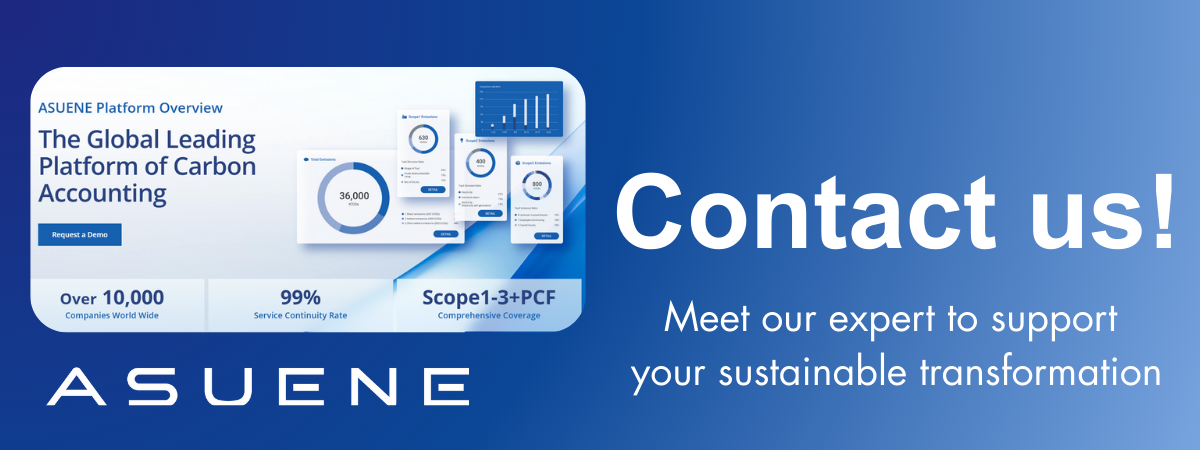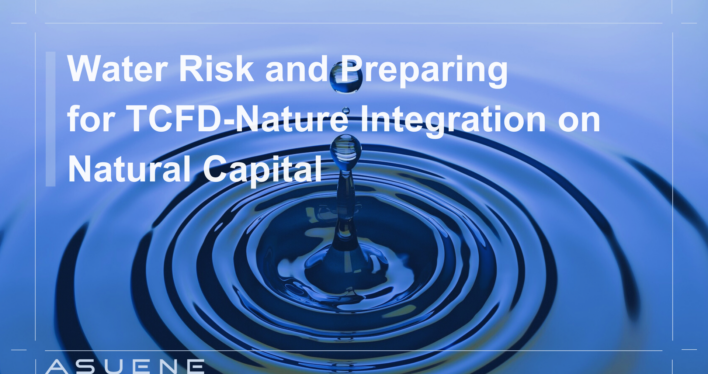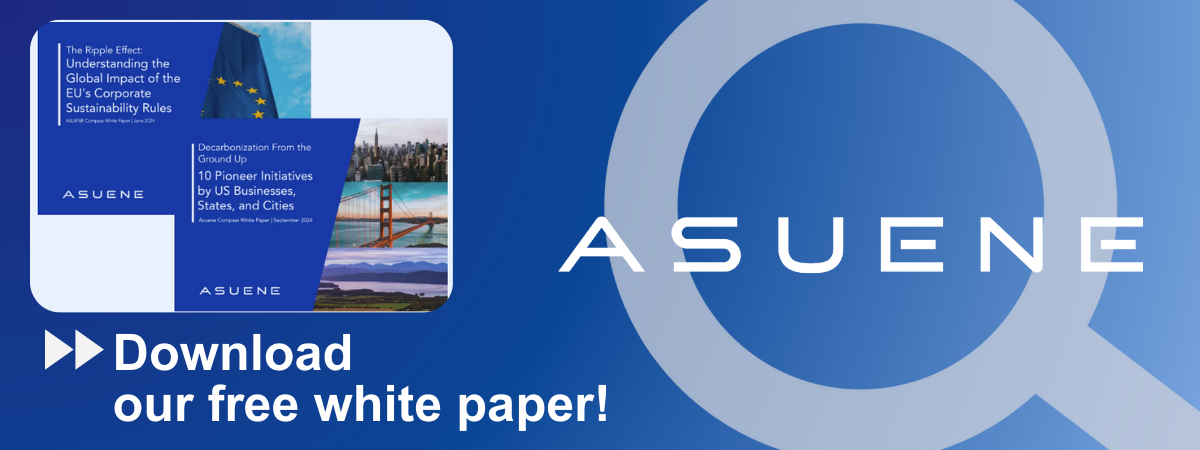- Article Summary
-
Introduction
As climate and biodiversity crises converge, companies are under growing pressure to expand their ESG risk frameworks beyond carbon. Water, a key component of natural capital, is increasingly recognized as both a financial and reputational risk. With the emergence of the Taskforce on Nature-related Financial Disclosures (TNFD) and its alignment with TCFD, firms must now assess and disclose their dependencies and impacts on ecosystems—including freshwater systems.
This article explores how businesses can manage water-related risks, prepare for nature-inclusive disclosure standards, and integrate water stewardship into climate and ESG strategies.
The Materiality of Water in Corporate Risk Management
Water risks manifest through physical scarcity, regulatory constraints, and reputational damage. According to CDP Water Security 2023, over $300 billion of business value is at risk due to water-related issues globally. Companies in agriculture, textiles, mining, energy, and pharmaceuticals face particularly acute exposure.
Figure 1: Types of Corporate Water Risk
| Risk Type | Description | Examples |
|---|---|---|
| Physical Risk | Water scarcity, drought, flooding | Factory shutdowns, supply chain delays |
| Regulatory Risk | Water use limits, discharge permits | Fines, operational suspensions |
| Reputational Risk | Stakeholder backlash, NGO campaigns | Brand boycotts, license revocations |
Mapping water dependencies across the value chain—especially in production, processing, and sourcing—is a prerequisite for strategic mitigation.

TCFD and TNFD: Bridging Climate and Nature Disclosure
The TNFD, launched to mirror and extend the TCFD framework, focuses on four pillars: governance, strategy, risk & impact management, and metrics & targets—identical in structure to TCFD. However, TNFD expands the lens to include dependencies on natural ecosystems (e.g., watersheds, wetlands) and impacts (e.g., pollution, land-use change).
Figure 2: Structural Parallels Between TCFD and TNFD
| Pillar | TCFD Focus | TNFD Extension |
| Governance | Climate oversight | Biodiversity & ecosystem oversight |
| Strategy | Climate-related planning | Nature-related risk & opportunity strategy |
| Risk Management | Climate risk integration | Ecosystem dependency & impact analysis |
| Metrics & Targets | GHG emissions, energy use | Water intensity, ecosystem condition |
Integrating TNFD-aligned nature metrics into existing TCFD disclosures enhances strategic alignment and prepares companies for future regulation and investor scrutiny.
Tools and Frameworks for Water Risk Assessment
Several tools support water risk analysis at both asset and value-chain levels. Common platforms include:
- WRI Aqueduct: Provides physical water risk maps (scarcity, floods, droughts).
- WWF Water Risk Filter: Evaluates physical, regulatory, and reputational risks with sector-specific insights.
- CDP Water Questionnaire: Structured for investor-grade disclosure on governance, targets, and responses.
- ENCORE Tool (by UNEP-FI): Links ecosystem services with economic sectors and their nature dependencies.
Figure 3: Comparison of Leading Water Risk Tools
| Tool | Strengths | Best For |
| WRI Aqueduct | Granular global data, interactive | Physical risk analysis |
| WWF Risk Filter | Sector-focused, TNFD-linked | Multi-risk assessment |
| CDP Water Security | Disclosure standardization | Investor and rating engagement |
| ENCORE | Ecosystem impact/dependency mapping | Nature-related planning |
Toward Integrated Climate-Nature Strategy
Leading companies are embedding water and broader nature considerations into their enterprise risk management and sustainability strategies:
- Water Stewardship Plans: Site-level targets, stakeholder engagement, and replenishment projects.
- Scenario Analysis: Applying TCFD-like methodologies to water futures (e.g., increasing water stress by 2030).
- Supply Chain Mapping: Tracing embedded water risks in raw materials (e.g., cotton, coffee, lithium).
- Financial Integration: Factoring water pricing, treatment costs, and scarcity premiums into investment models.
This integration strengthens resilience, aligns with emerging taxonomies (e.g., EU Nature Restoration Law), and reinforces a company’s license to operate.
Conclusion
The convergence of climate and nature-related disclosures demands a more holistic ESG approach. Water risk—long underappreciated—is becoming a core metric of business sustainability and resilience. By aligning TCFD and TNFD frameworks, leveraging water risk tools, and embedding nature-related metrics into strategy and reporting, companies can meet stakeholder expectations and future-proof their operations in an increasingly resource-constrained world.
Why Work with ASUENE Inc.?
Asuene is a key player in carbon accounting, offering a comprehensive platform that measures, reduces, and reports emissions, including Scope 1-3, with expertise in decarbonization. Asuene serves over 10,000 clients worldwide, providing an all-in-one solution that integrates GHG accounting, ESG supply chain management, a Carbon Credit exchange platform, and third-party verification.
ASUENE supports companies in achieving net-zero goals through advanced technology, consulting services, and an extensive network.


